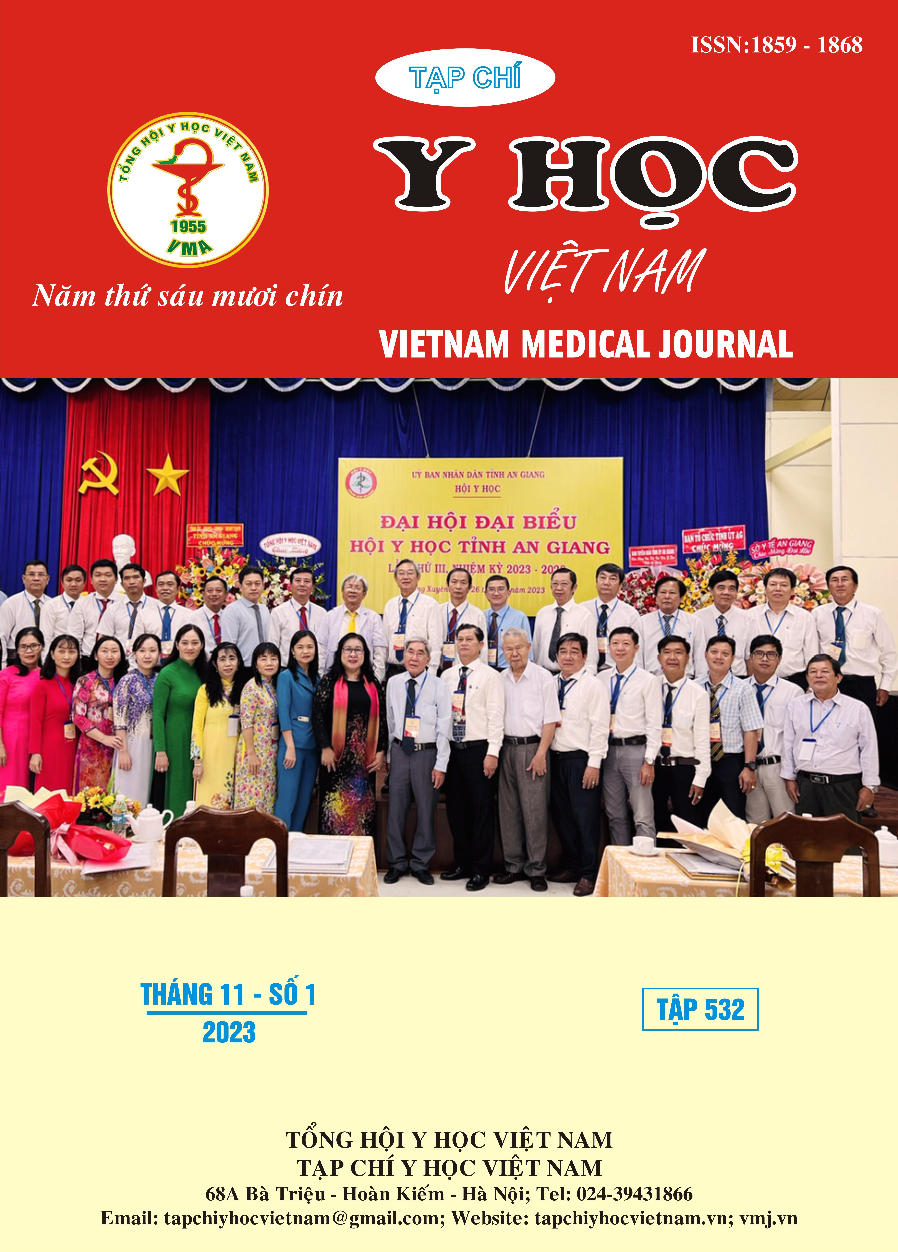ASSESSMENT OF RATES, ASSOCIATED FACTORS, AND RISK OF PRESSURE INJURY
Main Article Content
Abstract
factors, and risk of pressure injury among older inpatients. Methods: This cross-sectional study was conducted on 410 older inpatients at the Department of Geriatrics, Gia Dinh People's Hospital, from December 2022 to April 2023. Participants were evaluated prevalent pressure injury at admission and incident pressure injury during staying in the hospital. Those without pressure injury at admission were evaluated risk of onset pressure injury based on the Braden scale. Multivariate logistic regression analysis was used to assess factors associated with pressure injury at admission. Results: The prevalence of pressure injury at admission was 6.3% (26/410 patients). The incidence of pressure injury during staying in the hospital was 3.4% (13/384 patients). Multivariate model indicated that pre-admission immobility was a factor associated with pressure injury at admission (adjusted OR: 51.9, 95% confidence interval: 9.67-279.1, P < 0.001). The mean total Braden score among 384 patients without pressure injury at admission was 18.5 ± 3.3. There was an increasing trend in the incidence of pressure injury in levels of the Braden scale. Conclusion: The study revealed the older inpatients had respectively the prevalent and incident pressure injuries were 6.3% and 3.4%. Pre-admission immobility was associated with pressure injury in older adults.
Article Details
Keywords
pressure injury, older inpatients, Braden scale
References
2. Jan Kottner, Janet Cuddigan, Keryln Carville, et al (2019). Prevention and treatment of pressure ulcers/injuries: The protocol for the second update of the international Clinical Practice Guideline 2019. Journal of Tissue Viability; 28(2):51-58.
3. Braden BJ, Bergstrom N (1994). Predictive validity of the Braden Scale for pressure sore risk in a nursing home population. Research in Nursing & Health; 17(6):459-470.
4. Sackley C, Brittle N, Patel S (2008). The Prevalence of Joint Contractures, Pressure Sores, Painful Shoulder, Other Pain, Falls, and Depression in the Year After a Severely Disabling Stroke. Stroke; 39(12):3329-3334.
5. Suellen D, Iraktânia V, Adriana L, et al. (2017). Pressure Ulcers in Institutionalized Elderly People: Association of Sociodemographic and Clinical Characteristics and Risk Factors. Open Journal of Nursing; 7:111-122.
6. Truơng Thanh Phong, Dương Thị Hoà (2021). Thực trạng loét áp lực và một số yếu tố liên quan đến người bệnh hôn mê tại khoa Hồi sức tích cực và chống độc Bệnh viện đa khoa Trung Ương Cần Thơ. Tạp chí y học Việt Nam, 503(1):94-100.
7. Sedigheh I, Hossein R, Sakineh S (2012). Relationship between Braden Scale Score and Pressure Ulcer Development in Patients Admitted in Trauma Intensive Care Unit. International Wound Journal; 9(3):248-252.
8. Trần Hồng Huệ, Nguyễn Thị Lan Minh (2017). Khảo sát loét tỳ đè ở bệnh nhân tại các phòng bệnh nặng trong Bệnh viện Nguyễn Tri Phương năm 2016. Tạp chí Y học Thành phố Hồ Chí Minh; 21(3):112-116.


